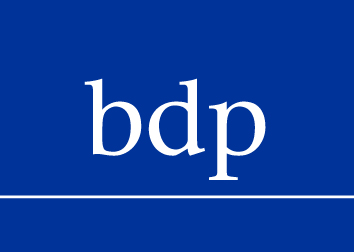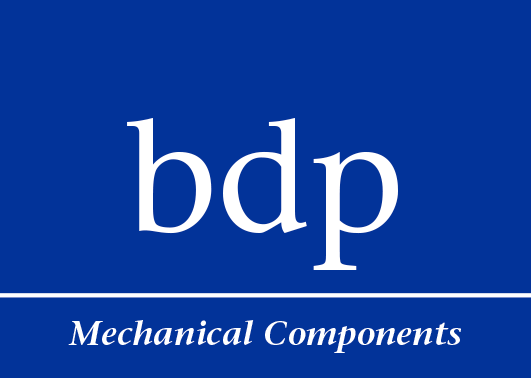Newsletter Abril 2022:
By: Lisa Xu
Translated by: Xiuguo Dong
Three basic tools for process improvement – flow chart, process failure mode and effects analysis (PFMEA), control plan
For many European companies, suppliers’ continuous improvement in projects with Chinese suppliers is a complex task covering the whole project and product lifecycle and takes a long time. Moreover, visible results at each stage are especially important. Therefore, great carefulness is needed for process improvement.
Operators and quality inspectors mainly focus on three areas to control the process on-site regarding suppliers: technical requirements for the conversion of drawings to each single production step, work instructions, and inspection plans, such as on-site inspection records to ensure that each step meets the requirements. In addition, from the perspective of complete process control, three documents are usually mentioned: flow chart, PFMEA, and control plan. Customers focus mainly focus on these documents. A supplier must make sure that the on-site control follows the same guidelines as these documents. Flowchart, PFMEA, and control plan play a central role in process improvement for every project, from conceptual design to sample and serial production until the end of the life cycle.
Most OEM / ODM suppliers do not have ownership of the product development and design. So, the main task for the customer is to give the product concept, specify the project planning, design the product and develop the project. However, after the project is nominated, the supplier also needs to complete the project plan for process design development and validation, identify the customer’s design requirements and key features, complete the product / process design, and identify the critical elements of the process. In addition, the supplier also needs to improve continuously during the prototyping stage, sample, and serial production to fulfill customers’ requirements.
Preliminary definition of flow chart, PFMEA, and control plan
In order to make a project plan, the supplier must understand the customer’s needs clearly and consider reliability goals and quality goals, in addition to the design key features and the previous failure experience of similar products. Then, he has to transfer them into his own process control goals, such as:
Preliminary process guidelines, mold design, tooling, fixtures, tools, and which processes or subcomponents need to be outsourced. ⇨ Preliminary flow chart
How to achieve specific characteristics of the product? What are the essential control parameters in the process? What are the potential process risks? What are the severity, frequency, and detectability of these risks ⇨ Preliminary PFMEA
How to test and gauge design and other preliminary testing method discussions and control method selection, such as preliminary statistical analysis of test data, response plans, etc.? ⇨ Preliminary control plan
In addition, the project planning and resource input, key project milestones, and delivery dates are closely aligned with the overall project certification needs of the client.
A proper flowchart shall contain process information (What is outsourced and what is manufactured?), equipment information, process steps, key characteristics of the product/process, classification of characteristics, and process characteristics (e.g. tool type, tool life, speed). A proper PFMEA shall contain severity, frequency, and detection information. Also, the Risk Priority Number (RPN) value needs to be calculated. In practice, if the RPN value exceeds a certain score, which the customer defines, the supplier must take improvement measures according to the customer’s requirements. However, it is important to prevent suppliers from scoring low on purpose in order to avoid taking improvement measures. Usually, it is worthwhile to learn from the practice that it is necessary to develop improvement measures for the 10% part of the RPN value sorting. The specific improvement ratio needs to be specified together by the customer and supplier.
A proper control plan shall cover the critical information of the flow chart, the risks identified in the PFMEA, and the control methods for potential risks, such as detection methods, frequency, sample size, process control methods, and abnormal response mechanisms. During the review of these elements, it is to confirm the control methods’ adequacy and verify that they match the inspection plan, work instructions, and inspection records.
Sample verification
After the preliminary flow chart, PFMEA, and control plan are formed, it is necessary to refine the technical requirements and work instructions and inspection instructions for each process, train employees, and monitor effective implementation. The sample or PPAP approval process is a comprehensive and professional process. For example, during PPAP approval, the standard contains 18 elements that need to be completed one by one to confirm that all the required work in the production process is completed. Only in this way can suppliers ensure that the sample is manufactured at the level of serial production and that the official part certification is obtained. The focus of control at this stage is to summarize all quality issues that have occurred, identify possible causes throughout the process, and ensure that each issue is identified and resolved at the production whenever possible.
Defect catalog and inspection specifications should also be developed together with the supplier to ensure adequate inspection methods and frequency and ensure that defects can be fully identified and intercepted at the supplier without the customer issuing a claim. At this stage, we need to ensure that the production of samples is consistent with the state of the serial production.
After improving the flow chart, PFMEA, and control plan for this phase, the work is ready for the subsequent phase of optimization and improvement. The information submitted at this stage is an important reference for customers and suppliers to check whether the product and process are changed subsequently.
In the first pre-serial trial production, it is better to count the scrap rate and the reasons for scrap at each process stage, from order placement to actual shipment, and the preliminary internal scrap rate according to the production flow sheet. The supplier needs to collect feedback from the customer regarding quality issues and complete a rigorous root cause analysis to identify the root causes of the defects. Then improvement measures from production must be developed. It is also crucial to check whether inspection methods in the existing system can be revised. Further, it is necessary to verify that the production schedule is consistent with that predicted in the previous certification phase, to find out the process time from order placement, material preparation, production, inspection, packaging, and shipping and whether there are processes that need to be adjusted to prepare for a steady ramp-up. All these measures to deal with risks, improvement of production technology, process, control method, inspection method, etc., need to be updated in the flow chart, PFMEA, and control plan to ensure proper implementation. The main objective of this phase is to summarize all identified and occurring quality problems one by one and ensure that improvements are made to reduce the scrap rate and increase productivity so that all parties can steadily pass through the production ramp-up.
Serial production
During serial production, supplier audits should be held more frequently, such as annual supplier product audits, internal self-audits, audits for every supplier tier, and regular audits made by the customer. The frequency must be tracked quarterly, half-yearly, or annually, according to the customer’s requirements and the supplier’s internal arrangements. In addition to following up on the closure of customer complaints, the supplier’s production efficiency and scrap rate also need to be documented in the audit. It is to identify whether the supplier’s production is stable. This includes the delivery stability and quality, such as the supplier’s production batch management, first-in-first-out control, traceability control, change management, non-conformity handling process, inspection records, statistical analysis data, defects problem summary table, defective improvement form, etc. Any supplier self-audit or audit by a customer at this stage that requires process optimization and enhancement, as well as daily customer complaints, internal defects and deficiencies, and production efficiency improvements, are all inputs for continuous improvement during serial production. All related risks, problems, improvement measures, and optimization content must be identified and updated in the flow chart, PFMEA, and control plan to ensure proper execution.
Overall, there is no end to the continuous improvement of the entire process. Flowcharts, PFMEA, and control plans are, on the one hand, specification documents to ensure orderly execution and, on the other hand, tools for improvement. Suppliers can identify the gaps according to the current control level, find ways and means to improve according to the problems or continuous improvement requirements, and then stabilize and implement them. This is repeated to complete the PDCA (Plan-Do-Check-Act) cycle of process improvement.
bdp offers you services around the process audit and the associated tasks:
- Audits and inspections for companies working together for the first time, such as potential supplier risk audits.
- Accompanying production control of samples and small batches in ongoing projects, such as PPAP certification.
- Monitoring the stability of serial production to the inspection before shipment of each consignment.
- Regular process audits, system audits, product audits, and audits of subcontractors for special processes during series production.
- Provide on-site support and resolution of unexpected quality issues, analyze and resolve problems and produce professional 8D reports, and mentor suppliers in a full PDCA cycle of improvement.
Remark of bdp MC: The actual situation in a process audit can be more complex than you think, as a row of unknown factors can be involved. Our team can represent you locally and perform professional process audit services in China and Europe.



